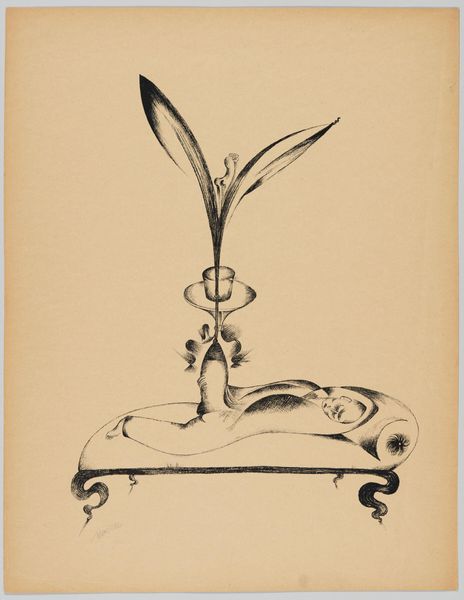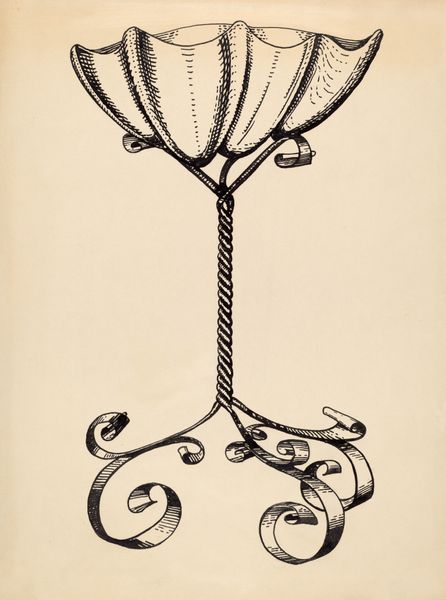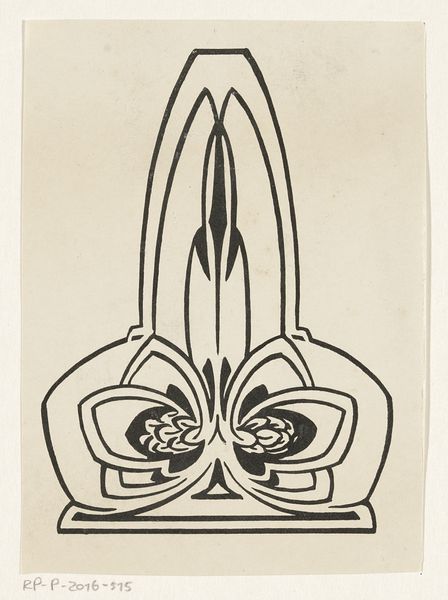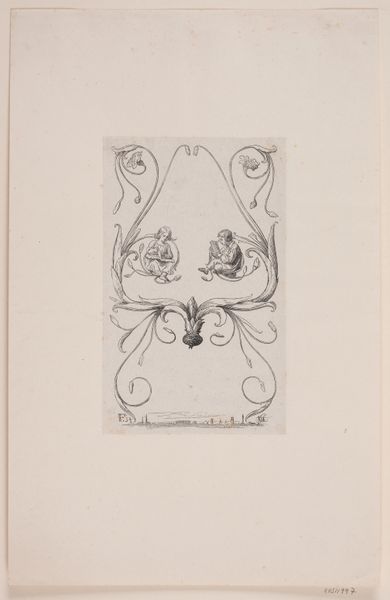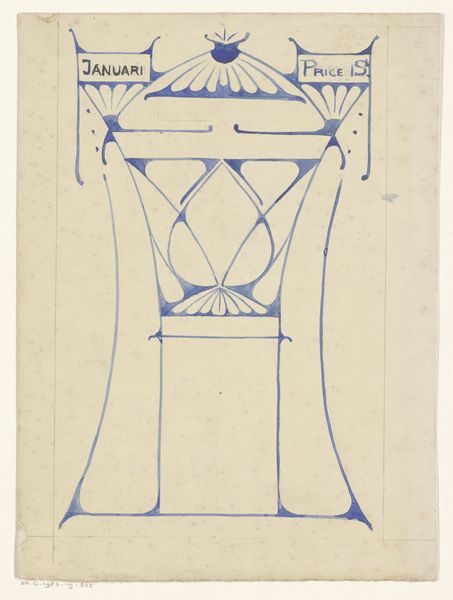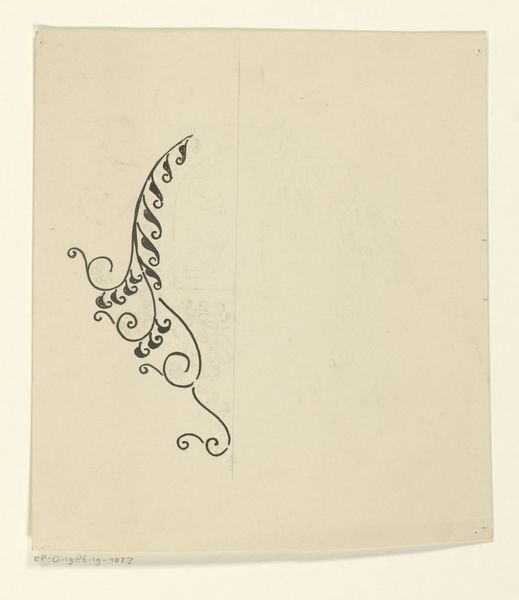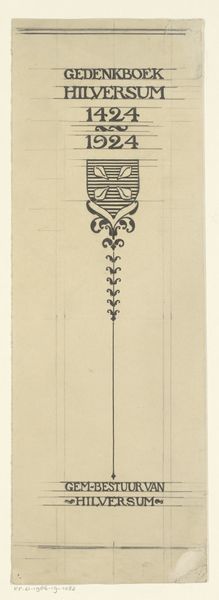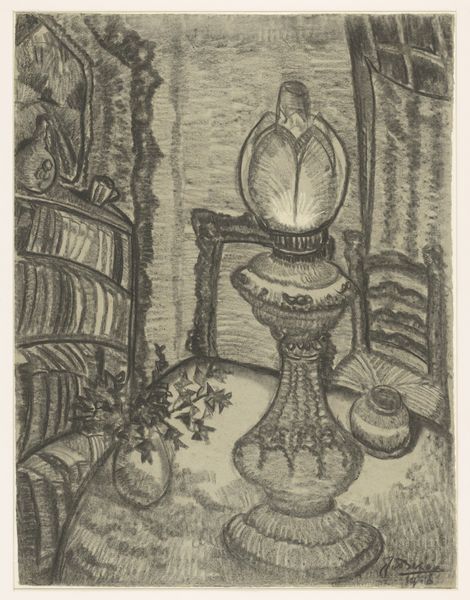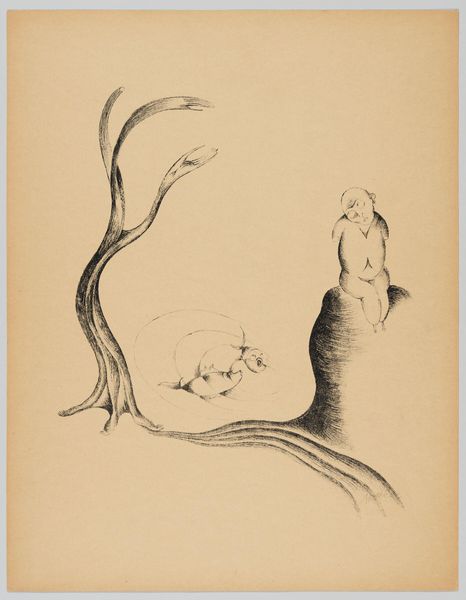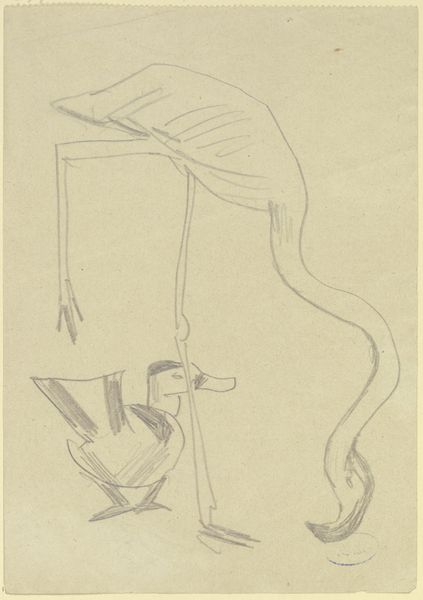
Der Männ mit dem Holzbein Träumt (The Man with the Wooden Leg Dreams) 1920
0:00
0:00
drawing, print, ink, pen
#
portrait
#
drawing
#
ink drawing
# print
#
pen sketch
#
figuration
#
ink
#
expressionism
#
line
#
symbolism
#
pen
#
cityscape
Dimensions: overall: 59.3 x 46 cm (23 3/8 x 18 1/8 in.)
Copyright: National Gallery of Art: CC0 1.0
Editor: Here we have Heinrich Hoerle's 1920 pen and ink drawing, "The Man with the Wooden Leg Dreams." The composition is quite striking. There's a figure reclining, seemingly dreaming, below this bizarre sort of floral, almost architectural form. What do you make of its visual elements? Curator: Intriguing, isn't it? Immediately, the interplay between line and form captures the eye. Note the deliberate use of line weight. Thicker, darker lines define the figure's contours, grounding it in a physical reality. Yet, the lighter, more ethereal lines describing the 'dreamscape' above suggest a realm of pure abstraction. Editor: I see what you mean. The contrast really does separate the two visual planes. But what about the actual forms themselves? That spiky plant or structure seems so out of place, like a bizarre ornament. Curator: Indeed. Its rigid, almost geometric construction contrasts sharply with the soft, organic lines of the reclining figure. It's a dialogue between order and chaos, the conscious and the unconscious. And the fact that it looms over the figure – dominating the upper portion of the composition - gives it significant visual weight. Is this an oppressive structure, or something generative? Editor: That's a really interesting question! I hadn't thought of it that way. I guess it could be both, a source of constraint and of creation, maybe like dreams themselves? Curator: Precisely! And consider how the lack of color further emphasizes the starkness of these formal relationships. Every mark, every line, contributes to the overall structure and its layered meaning. The artist uses stark means to produce ambiguity. Editor: I see it so differently now. It's fascinating how focusing on the lines and forms reveals new perspectives on the subject matter. Curator: Agreed. Close visual analysis is a powerful tool for unlocking an artwork's complexities and expanding our understanding.
Comments
No comments
Be the first to comment and join the conversation on the ultimate creative platform.
